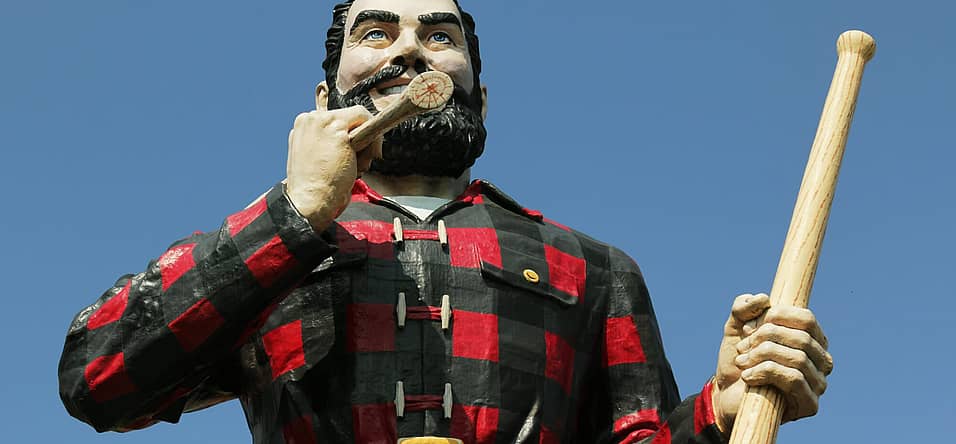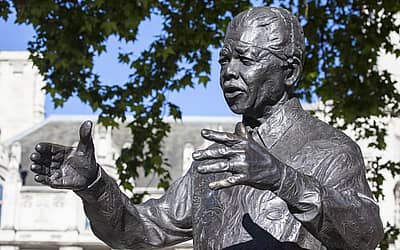
National Paul Bunyan Day
Gather together with friends or family to honor the iconic story of Paul Bunyan by sharing folklore and revisiting these sometimes odd, always entertaining tales.
It may sometimes seem as though a great majority of the most popular folklore characters are evil predators who spend their lives hunting for their next victim. Paul Bunyan, on the other hand, is the embodiment of the all-American lumberjack—tall, strong, capable, and good-natured.
History of National Paul Bunyan Day
The character of Paul Bunyan originated in the oral tradition of North American loggers dating back to the mid-1800s. For at least 30 years, Paul Bunyan stories, some of which included motifs from older folktales such as absurdly severe weather and fearsome critters, were often told in the lumbercamp bunkhouses. Even the etymology of the name Paul Bunyan is unknown, but many think it could have been related to the Québécois expression “bon yenne!” that expresses surprise or astonishment.
Paul Bunyan was later popularized by freelance writer and adman William B. Laughead (1882–1958) in a 1916 promotional pamphlet for the Red River Lumber Company who was looking for a face for the advertising campaign. Laughead embellished greatly on the character’s older exploits and added some of his own, such as Paul Bunyan’s pet blue ox, “Babe”.
The writer also increased Paul Bunyan’s body to impossible proportions. Despite this, however, the character quickly became a hit, and the Red River ad campaign made Paul Bunyan a nationally recognized figure. The character’s name and image continued to be utilized in promoting various products, cities, and services over the following decades, and giant statues of Paul Bunyan were even erected in several cities.
National Paul Bunyan Day was created to celebrate this influential bit of folklore and all it did to promote local business and tourism in numerous communities in the northern states.
How to celebrate National Paul Bunyan Day
If you’re an adult, it’s possible you’ve forgotten just how much fun folklore can be, whether it takes the form of ghost stories told around a campfire while roasting marshmallows or terrifying horror movies. If you do like horror movies, you’re in luck, as countless ones have been based on folklore and urban legends. F.W Murnau’s Nosferatu, a 1922 silent German film, is a classic of the folk horror genre—one of the first horror movies ever made, its German Expressionist style and haunting depiction of the title monster are sure to remain in the your memory long after viewing.
In fact, Nosferatu is even recognizable to people who haven’t seen the film, showing the impact the film has had on popular culture since its release almost 100 years ago. The Wicker Man, a British classic, is also well worth watching for its chilling depiction of cult mentality—just make sure you watch the original, not the 2006 Nicholas Cage remake, which has been mocked by both audiences and critics alike since its release. Tim Burton’s Oscar-winning Sleepy Hollow, based on the Washington Irving’s American classic The Legend of Sleepy Hollow, focuses on the Headless Horseman, one of America’s most infamous folk characters, and could also be a good choice on this day. Unfortunately, Paul Bunyan does not have his own movie aside from a 1958 animated musical.
National Paul Bunyan Day is also the perfect day to find out more about local folklore—no matter where you live in the world, there are definitely some interesting legends about the area, so take advantage of this little folk hero holiday to find out some more. Just don’t believe everything you read!









